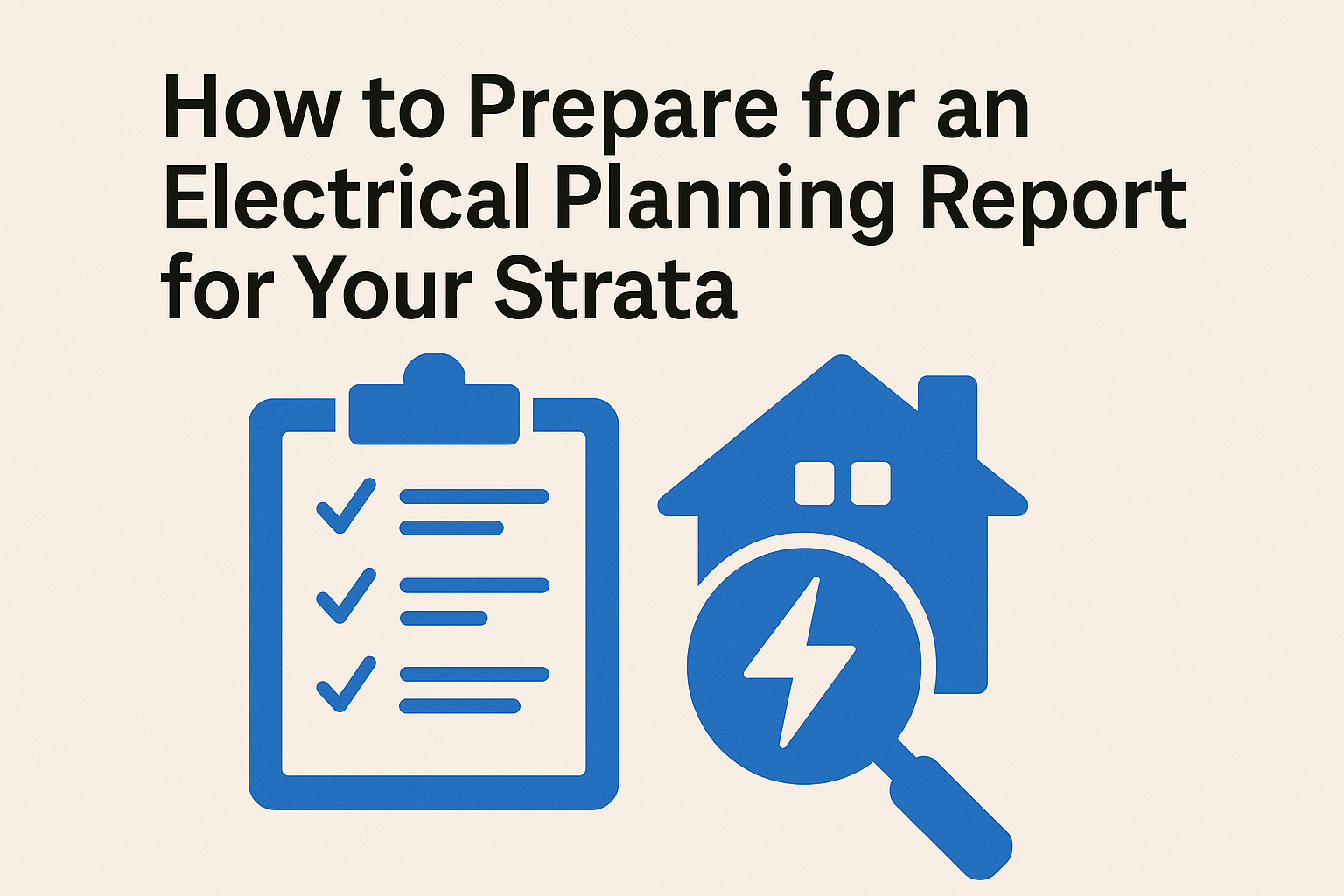How to Prepare for an Electrical Planning Report for Your Strata
Electrical Planning ReportsHow to Prepare for an Electrical Planning Report in Your Strata Building
With the rising demand for electric vehicles, heat pumps, and energy-efficient upgrades, many BC strata buildings are facing the same big question: Do we have enough electrical capacity to support the future?
That’s where Electrical Planning Reports (EPRs) come in—and if your strata has five or more units, this report is no longer optional. Under Bill 22, all eligible strata corporations in British Columbia must complete one, with deadlines approaching as soon as December 2026.
But how exactly do you get started?
Here’s a practical guide to help your strata prepare for an Electrical Planning Report—from council discussions to site access and everything in between.
Understand Why It Matters
Before diving into logistics, it’s important that your strata council and owners understand what the EPR is—and what it’s not.
An Electrical Planning Report is a one-time technical evaluation of your building’s electrical infrastructure. It helps your community:
- Understand current usage and limitations
- Plan for future electrical demand (like EV chargers or heat pump installations)
- Identify cost-saving energy upgrades
- Meet new provincial requirements under Bill 22
It’s not a construction plan, and it doesn’t commit you to any upgrades. It simply lays out what’s possible—and what might need to change.
Step 1: Review Your Deadline
Your strata’s EPR deadline depends on where you’re located:
- December 31, 2026 – Metro Vancouver, Fraser Valley, Capital Region
- December 31, 2028 – All other areas in BC
- New strata plans – Must complete the EPR within five years of the plan being filed
Check your regional district to confirm your compliance timeline.
Step 2: Start the Conversation
Educate Owners Early
Get the topic on your Annual General Meeting (AGM) agenda or call a special general meeting if needed. Provide a simple breakdown of:
- What an EPR is
- Why it’s required
- The benefits of understanding your building’s electrical limits
- The potential costs and how they can be funded
This helps avoid confusion—and builds support from owners.
Step 3: Budget for the Report
The cost of an EPR varies depending on the size and complexity of your building, but most reports can be funded from either:
- The operating budget (with majority approval)
- The Contingency Reserve Fund (CRF) (also with a majority vote)
Add it to your upcoming budget planning if it’s not already in place.
Step 4: Gather Building Documents
Your EPR provider will need a clear picture of your electrical systems. Start collecting:
- Utility billing history
- Strata plan and electrical drawings (if available)
- List of systems powered by electricity (e.g. lighting, heating, ventilation, elevators)
- Records of any recent upgrades or retrofits
The more info you provide, the more accurate and useful the report will be.
Step 5: Issue a Request for Proposal (RFP)
Use CHOA or BC Hydro’s sample RFP templates to invite quotes from qualified professionals. Be sure to include:
- Building type and location
- Number of units and common areas
- Systems that use power (including future plans for EV chargers or heat pumps)
- Site access instructions
- Requested deliverables
Who Can Do the Report?
Only a qualified person can complete an EPR. Depending on your building type, this includes:
- A licensed electrical engineer
- A registered applied science technologist
- A journeyperson electrician (for buildings under Part 9 of the BC Building Code)
Step 6: Provide Access for the Site Visit
Once your provider is selected, they’ll need access to key building systems, including:
- Electrical and mechanical rooms
- Elevator control systems
- Parkade or EV charger areas
- Rooftop units or make-up air systems
- Alternative energy systems, if any (e.g. solar or geothermal)
Make sure a council member or building manager is available to assist during the visit.
Step 7: Review and Store the Report
When the report is complete:
- Review it with your council to understand recommendations
- Consider how it might influence your long-term capital planning
- File it as a permanent strata record
- Attach a copy to the Form B: Information Certificate, as required
Summary
Preparing for an Electrical Planning Report doesn’t have to be overwhelming. With clear planning, transparent communication, and the right professional support, your strata can meet its legal obligations and take a smart step toward future-proofing your building.
Remember: this report is a planning tool, not a construction order. Done right, it helps your community make better decisions—not just for EV chargers and heat pumps, but for safety, sustainability, and long-term budgeting.
Frequently Asked Questions (FAQ)
How long does the report process take?
Depending on your building size and the provider’s availability, the process can take 1 to 3 months from planning to final report.
Can we vote to delay the report?
No. Strata corporations cannot opt out of this requirement by vote. It’s required under provincial law.
Do we need to do upgrades right away?
No. The report simply outlines capacity and recommendations. You choose when and how to act.
Should we do an EV Ready Plan at the same time?
Yes! Many stratas choose to do both together. The EPR helps determine if your system can support EV charging; the EV Ready Plan details how and where to install chargers.

